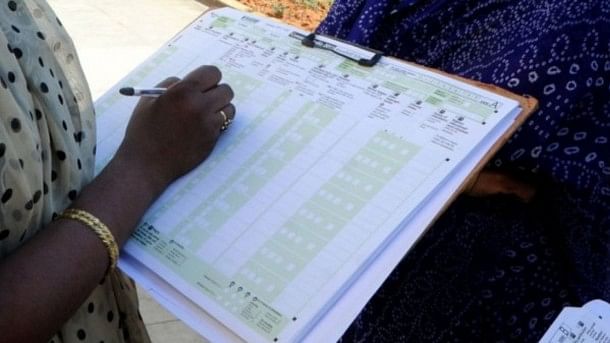
Representative image.
Credit: iStock Images
The modern nation-state’s objective of bringing radical reform in caste-based social order is under a deadlock. It was an ethical aspiration that rapid urbanisation, economic and political development, and growing literacy would kill the monster of caste. The objective was never fulfilled. Instead, India’s democratic processes have offered positive permanency to the identities of marginalised social groups.
Identity-based assertions of the Dalits, the Adivasis, and the Backward Classes have raised demands for their equitable participation in power structures, disturbing the perpetual domination of the social elites over polity and economy. Caste is not a dirty word today. It has re-emerged as a powerful tool to reprimand the conventional elites in politics, economy and culture.
In the 2024 general elections, the I.N.D.I.A. bloc effectively campaigned over the agenda of social justice, and constitutionalism. This campaign focused on ensuring more power and participation of the Dalits, the Adivasis and the OBCs in the political arena, alongside the demand to conduct a caste census. New caste-based data and analytical resources are essential to improvise the existing reservation policies, especially to ensure equitable participation of marginalised social groups in the neoliberal economy.
Since the colonial period, the exercise of the national census was mandated to conduct a stratified quantitative survey, examining the socio-economic and religious diversities of the population. Caste emerged as a natural indicator to enumerate the population as for the majority of the population (especially the Hindus), caste often determines their social location and class roles. This is done with a moral objective, mainly to emancipate the vulnerable and marginalised social groups.
The current discussion on the caste census, especially the demand to enumerate the OBCs, must be understood similarly. Such enumeration would showcase the location of the OBCs in various sectors of power and direct the State to craft substantive policies for their social and economic welfare.
In the current context, it will help the State to examine the claims of neoliberal economic experts that globalisation has reduced poverty, minimised the gap between the rural and urban geographies, and elevated a significant population to the status of the middle class. It has been argued that with the maverick boom in the service sector industry, new arenas of employment are introduced (especially in the IT sector), reducing the national unemployment ratio.
However, the impact of neoliberal economic policies on the OBCs, especially the communities engaged with agrarian occupations, offers an alternative story. The contribution of agriculture to the Gross Domestic Product has declined from 35% in 1990-1991 to a subsistence level of a mere 15% in 2022-2023. There is a visible reduction in the State’s investment in the welfare sector due to subsidy cuts, especially in fertiliser procurement and irrigation facilities. Agricultural growth has fallen, and many farmers, especially with small landholdings, are engaged in it for mere sustenance and not for profit.
That has often led to an increase in cases of farmers committing suicide in Maharashtra, Andhra Pradesh, and Tamil Nadu due to financial debts, revealing that agriculture is in a deep crisis. The growing protests and agitation, even by the landed elites like the Marathas, the Patels, the Jats, the Vanniyars, etc., for reservation further showcase that even these groups face anxieties about the future as their conventional occupations are unsustainable.
The Bihar Caste Survey Report has already hinted that the majority of the OBC population is poor, dependent upon the agricultural economy and living in precarious social and class conditions. On the other hand, the major assets of power, mainly land, government jobs, employment in the private sector, and major positions in the public and private economic sectors, are dominated by the social elites. Many of the OBCs are now identified as Extremely Backward Castes (EBCs) that are relegated to precarious socio-economic conditions with minimal representation in the government sector.
Further, in the urban economic development story that showcases the growing industrial and infrastructural development or the ascendency of unicorn startups and entrepreneurship, it is starkly visible that most beneficiaries belong to the social elite strata. The OBC is a young community in the domain of higher education, especially in the fields of engineering, management, entrepreneurship, and Information technology. The social elites continue to dominate most of the capitalist resources, high-profile jobs, and crucial employment opportunities. Similar conditions are witnessed with the Dalits and the Adivasis.
With the rise of the Right-wing BJP at the national level and the decline of social justice politics, few could raise the claims for participation and welfare of marginalised social groups. The BJP mobilised the lower strata of the Hindus with emotive communal slogans. However, they are silent over the demands of the Dalits, the OBCs and the Adivasis to ensure their participation in the workforce, in the government and neoliberal private economy.
The Union government lacks sensitive concerns and policy objectives to correct the exclusion of marginalised social groups from neoliberal capitalist development. With the growing demand to enumerate the OBCs in the census, a critical view has emerged that reprimands the current ruling elites for their failure to provide enough welfare measures to elevate the OBCs as significant participants in the power structures. Such criticality would revitalise the social justice agenda, allowing the OBCs to play a significant role in the upcoming political churnings.
(The writer teaches at the Centre for Political Studies, JNU)